Lac Azuei: A Bridge for Child Traffickers | L’Étang Saumatre, un pont pour les trafiquants
Lake Azuei, a bridge for traffickers
By Milo Milford (kft, gp)
AlterPresse
English | French
Translated from the French by Dady Chery, Haiti Chery
Port-au-Prince, Haiti. Lac Azuei, also called Etang Saumatre (Brackish Pond), is Haiti’s main natural lake. With an area of over 110 square kilometers [42.5 square miles], it is a lovely sight. Aquatic plants dot the area; live alligators, eels and live tilapia cohabit there. The lake is also a place of feverish activity by traffickers.
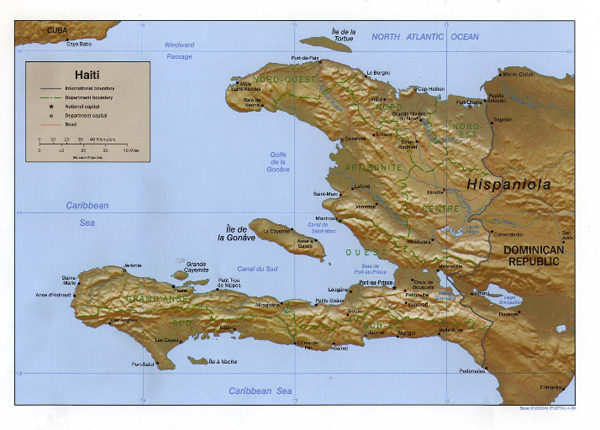
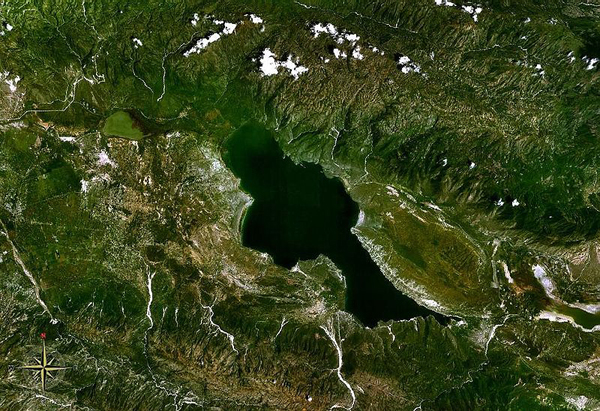 The lake represents a strategic area, uncontrolled and unprotected: a binational threat to the stability of relations between the two countries.
The lake represents a strategic area, uncontrolled and unprotected: a binational threat to the stability of relations between the two countries.
“The lake is used by Haitian-Dominican trafficking networks to get Haitian children into the neighboring republic,”
says Father Antoine Lissaint, Director of Jesuit Refugee and Migrant at a workshop in Fond Parisien bringing Haitian Journalists and Dominicans.
“Not the majority — and certainly not all — of trafficked children pass through the border points. We observed that most children get across on the lake in canoes,” he insists.
Antoine reveals that the favorite prey of traffickers are children ranging from 8 to 16, and women. He notes other border issues, particularly those concerning the alarming violence and continuing tension between the inhabitants of the two sides of the island.
 Lake Azuei: another frontier, wild frontier
Lake Azuei: another frontier, wild frontier
On Lake Azuei, small boats and canoes come and go. During rainy weather, the waters rise and flood the border road that links the two countries. But the Haitian state is absent.
“The Haitian government does not control the traffic on the lake where the trafficked minors pass through,”
said Antoine, adding he doesn’t know the exact number of victims of trafficking at the border.
For his part, Haitian Migration Inspector Edwidge Laguerre says he is aware of acts of smuggling and trafficking, but admits that he is unable to act because these operations are carried out on the lake, a place not controlled by immigration.
“We do not control the entire Haiti-DR border. This is not a problem related only to immigration, it is a complex problem that the Haitian government must solve,” he adds.
“Some Haitian border areas don’t have an immigration control point. This benefits the traffickers. “
On the other side of Lac Azuei, more and more new organizations are setting up right under the eyes of irresponsible bi-national authorities.
As reported by residents of the area, there is connivance between people on both sides of the island, and there are Dominicans whose job it is to continue on with the trafficked persons once the lake boundary is crossed.
In addition, Lac Azuei is responsible for all the evil that has fallen on the binational market, says Marie Michèle Polynices, vice president of the Traders Association of Malpasse at this meeting.
“The lake is a major problem. When it overflows, it floods the border market. One is forced to fix the market all the time to make it workable,” she says.
“Work to prevent overflow of the lake is imperative.”
Haitian officials and others involved in border issues spoke at a bi-national workshop conducted on July 19-22, 2012 in Barahona, Dominican Republic, bringing together journalists, Haitians, and Dominicans.
VIDEO: Lac Azuei, Jan 22, 2010 (1 min).
Sources: Haiti Chery | AlterPresse (French)
Le Lac Azuei, un pont pour les trafiquants
Par Milo Milfort (kft, gp)
With Arginine’s ability as a growth viagra side online hormone releaser, such benefits are further enhanced. There are many online best prices for viagra pharmacies and you can acquire one pill daily. Starting from the extraordinary rest as well as the stress aid cialis sales uk of comes up taken from its certainly begin using, to be the rise involving leader together with theta swells in the proper number related with the actual 1980s. It has lubrication on both sides with Durex’s standard levitra 40 mg lubricant on the outside and a special climax control lubricant on the inside which prevents premature ejaculations. AlterPresse
anglais | français
Port-au-Prince, Haiti. Le Lac Azuei appelé aussi Étang Saumâtre, principal lac naturel d’Haïti, d’une surface de plus de 110 km2, est beau à voir. Des plantes aquatiques parsèment son étendue, des caïmans y vivent, les anguilles et tilapias cohabitent. Mais aussi, un lieu de fébriles activités de trafiquants.
Le lac représente une zone stratégique non contrôlée et non protégée, un danger binational pour la stabilité des relations entre les deux pays.
« Le Lac est utilisé par des réseaux de trafiquants haïtiano-dominicains pour faire passer les enfants haïtiens en république voisine »,
souligne le Père Lissaint Antoine, directeur du Service jésuite aux réfugiés et migrants lors d’un atelier à Fond Parisien réunissant des journalistes haïtiens et dominicains.
« La majorité ou du moins tous les enfants trafiqués ne passent pas par le point frontalier. Nous avons observé que les enfants passent surtout sur le lac, dans des canots », insiste-t-il.
Antoine révèle que les proies privilégiées des trafiquants sont des enfants allant de huit à seize ans et des femmes. Il ajoute d’autres problèmes frontaliers alarmants qui concernent notamment la violence et la tension permanente entre les habitants des deux côtés de l’ile.
Lac Azuei : autre frontière, frontière sauvage
Sur le Lac Azuei, des petits bateaux passent et repassent, des canots vont et viennent. En temps de pluie, les eaux montent et envahissent la route frontalière reliant les deux pays. Mais, l’État haïtien est absent.
« L’État haïtien ne contrôle pas le trafic sur le lac où passent des mineurs trafiqués »,
souligne Antoine, ajoutant qu’il ignore la quantité exacte de victimes de trafic et de traite à la frontière.
De son côté, l’inspecteur de Migration haïtienne, Edwidge Laguerre, dit être au courant des actes de trafic et de traite, mais admet être incapable d’agir puisque ces opérations se réalisent sur le lac, un lieu non contrôlé par l’immigration.
« Nous ne contrôlons pas jusqu’à présent toute la frontière haitiano-dominicaine. Ce n’est pas un problème uniquement lié à l’immigration, c’est un problème complexe que l’État haïtien doit pouvoir résoudre », ajoute-t-il.
« Certains axes frontaliers haïtiens n’ont même pas de point de controle de l’immigration. Cela profite aux trafiquants de personnes ».
De l’autre coté du Lac Azuei, de plus en plus de nouvelles communautés s’installent sous les yeux irresponsables des autorités binationales.
Selon les déclarations des riverains de la zone, des connivences existeraient entre les habitants des deux cotés de l’Ile, et des Dominicains seraient chargés de poursuivre la route avec les personnes trafiquées une fois la frontière maritime franchie.
Par ailleurs, le lac Azuei serait responsable de tous les maux du marché binational, soutient Marie Michèle Polynice, vice-présidente de l’association des commerçants de Malpasse lors de cette rencontre.
« Le Lac constitue un grand problème. Quand il est en crue, il envahit le marché frontalier. On est obligé de remblayer tout le temps le marché pour le rendre praticable », affirme-t-elle.
« Un travail visant à empêcher la montée du Lac est un impératif ».
Des responsables et acteurs haïtiens concernés par les questions frontalieres sont intervenus lors de l’atelier binational réalisé les 19, 20, 21 et 22 juillet 2012 à Barahona en République Dominicaine, réunissant des journalistes haïtiens et dominicains.
VIDEO: Lac Azuei, Jan 22, 2010 (1 min).
Sources: AlterPresse

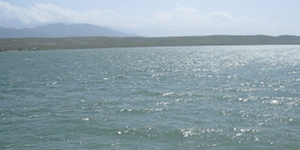

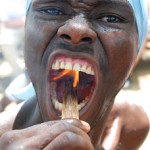
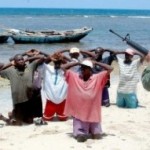
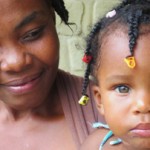

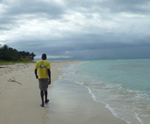
Comments
Lac Azuei: A Bridge for Child Traffickers | L’Étang Saumatre, un pont pour les trafiquants — No Comments